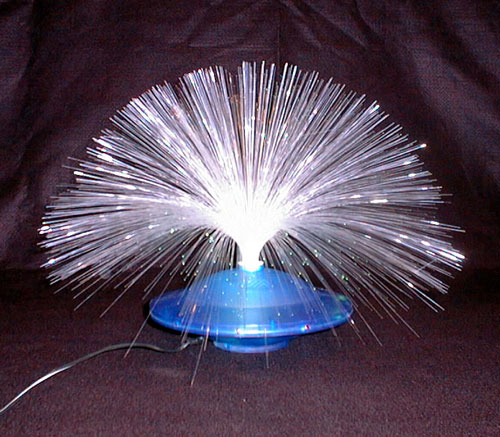The Royal Swedish Academy of Sciences decided to award the Nobel Prize in Physics for 2009 in two parts, half of the prize was given to Prof. Charles Kao from Hong Kong who developed the optical fibers and the other half will be divided between Williard Boyle and George Smith from Bell Laboratories in New Jersey who developed the - CCD

The Royal Swedish Academy of Sciences decided to award the Nobel Prize in Physics for 2009 in two parts, half of the prize was given to Prof. Charles Kao, a researcher at the Communications Standardization Laboratories in Harlow, UK and the Chinese University of Hong Kong "for the breakthrough achievements in the transmission of light in optical fibers for optical communication." The second half will be divided between Williard Boyle and George Smith from Bell Laboratories in New Jersey for the innovation in the field of imaging on semiconductor circuits - the CCD sensors.
The winners contributed individually to the two scientific achievements that helped shape the infrastructure for today's network company. They developed practical innovations for our daily lives and developed new tools for scientific research.
In 1966, Charles Kao made the discovery that led to the breakthrough in optical communication. He carefully calculated how to transmit light over large distances using optical fibers made of glass. Thanks to this development, it became possible to transmit light signals over a hundred kilometers, compared to 20 meters in the cables that were available until the sixties.
Kao's enthusiasm inspired other researchers to share his vision, which went into mass production just four years later, in 1970. Today's optical fibers make it possible to transmit all communication and sustain the interconnected society in which we live, and today it carries all Internet traffic, telephony, packets, texts, video, and everything in fractions of a second.
If we were to measure the cumulative length of the optical fibers that surround the world, we would reach over a billion kilometers - enough to circle the earth 25 thousand times and this length increases by thousands of kilometers every hour.
As mentioned, a significant part of the Internet traffic consists of digital images, which concerns the second half of the prize. In 1969, Williard Boyle and George Smith developed the first digital sensor (CCD, which stands for Charge-Coupled Device. The CCD uses the photoelectric effect, the theory of which Albert Einstein was involved in and for which he won the Nobel Prize in 1921. Through this effect, light is converted into signals Electrical The challenge in designing the image sensor was in reading large amounts of image points or pixels in a short time.
The CCD is the electronic eye of the digital cameras. It revolutionized the photography industry, because light could be captured electronically instead of on film. The CCD technology is also used in many medical applications, for example photography inside the human body, both for diagnosis and as an aid to microscopic surgeries.
Digital photography has become an irreplaceable tool in many fields of research. The CCD provided new capabilities to view things that were previously hidden. It has given us clear images of distant places in the universe as well as deep in the oceans.

10 תגובות
The committee is anti-Semitic! It is a fact that this year we did not give a Nobel Peace Prize to our Foreign Minister, Avigdor Lieberman, for his efforts for peace in our region!
To my father and everyone who understands:
What is happening these days with the particle accelerator at CERN? After the big malfunction last winter, we were promised that around September it would be back in operation...
Well, so what's going on with that? I haven't heard a word or scrap of news about it...
The award committee even named Aharonov as a finalist,
Although that's how they don't publish names of candidates who didn't win.
I assume that apart from the respect towards him, the "Swedes" hoped to allay fears of deliberate disrespect towards Israel.
Unfortunately, there is no shortage of Israelis who will call any nonsense anti-Semitic.
Do you know the one that cried wolf?
Antisemites are what they are.
Antisemites who hate Jews
: )
Nir:
I am also sorry that Aaronov did not receive the award this time, but I do not suspect the awardees.
The winners of the prize did earn it honestly and at least in one very prominent respect - that of the practical applications of their discoveries - they influenced our lives much more.
In any case - it is quite possible that Aaronov will win the prize next time.
Avi Blizovsky the previous message for you.
Articles that trust their information and are understandable to the general public
Followed all the time.
It is important that it is explained in clear language even to those who are not into physics.
Well done !!
To Avi Blikovsky - your articles can be trusted in terms of information and accuracy.
Always enjoy your articles.
There is probably an academy in Switzerland, but there is no king there...
I wonder who would have won the prize if it had been awarded by the Royal Academy of Switzerland (if there is such a thing) for example.
Although Israelis have won Nobel Prizes in the past, in this case I cast considerable doubt on the purity of the considerations of the members of the Swedish Academy.